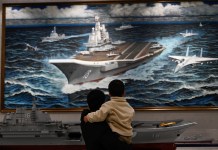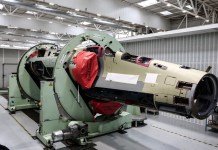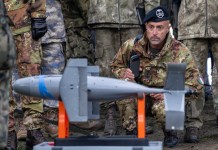In a historic first, the Carrier Strike Groups (CSGs) of India and the United Kingdom are conducting joint war drills together for the first time.
The UK’s HMS Prince of Wales and India’s INS Vikrant have begun Exercise Konkan 2025 in the Western Indian Ocean Region (IOR).
The four-day joint war drills were conducted from October 5 to October 8. This sea phase of the drills will be followed by the harbour phase (October 9-12), which will include professional interactions between naval personnel, cross-deck visits, sports fixtures, and cultural engagements.
Incidentally, the drills also mark the return of the cursed HMS Prince of Wales to the Indian Ocean. The HMS Prince of Wales had a forgettable outing in the IOR in June this year when one of its F-35B Lightning II had to make an emergency landing at Thiruvananthapuram Airport in Kerala, India, after a hydraulic fault occurred mid-flight.
The jet was grounded at the airport for over five weeks due to the need for specialized repairs, for which engineers were sent from the UK.
After 38 days of grounding, which triggered meme fests in India, the F-35B was finally able to take off on July 22nd, 2025, heading to Australia to reunite with its aircraft carrier.
Now, that same CSG, led by the HMS Prince of Wales, is back in the Indian Ocean.
However, that was not the only PR disaster the HMS Prince of Wales and its on-board F-35Bs suffered this summer in the Indo-Pacific. Barely three weeks after this incident, another F-35B of the carrier had to make an emergency landing in Japan on August 10 due to a malfunction.
The aircraft was grounded for 37 days while awaiting spare parts and undergoing repairs by a joint UK-Japan team, leveraging support from the nearby U.S. Marine Corps F-35B facility at Iwakuni Air Base. It was cleared and ferried back to HMS Prince of Wales on September 16, 2025, rejoining the carrier strike group off the coast of South Korea.
Following this second five-week grounding in two consecutive months, both Chinese and Russian state-run media took potshots at the HMS Prince of Wales, its never-ending technical glitches, and the U.S.-made F-35Bs on it.
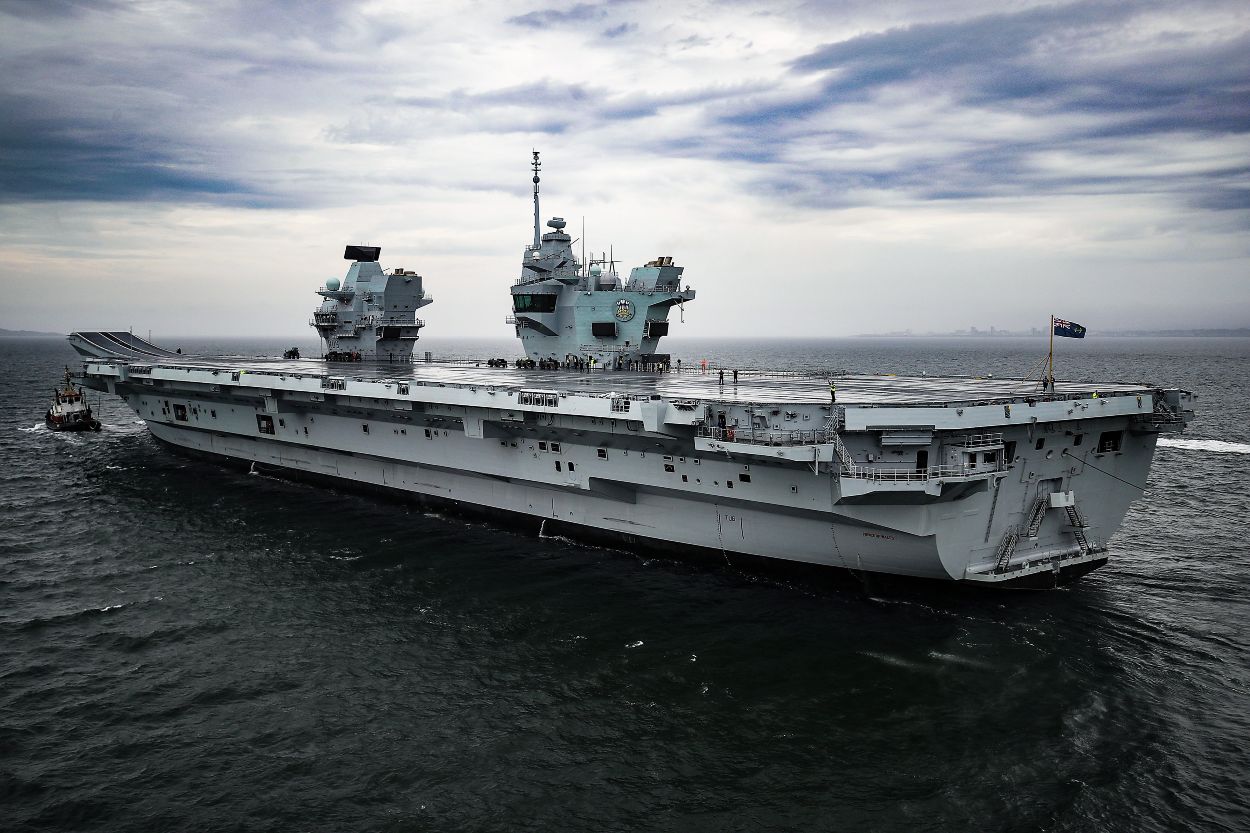
HMS Prince Of Wales & Operation Highmast
Notably, the HMS Prince of Wales is on an eight-month-long (April–December 2025) mission, Operation Highmast, marking the aircraft carrier’s most extended presence in the region since entering service in 2019.
The deployment commenced with the carrier transiting the Suez Canal and the Red Sea on May 24, 2025, and entering the Indian Ocean in early June 2025.
Afterwards, the CSG, led by the HMS Prince of Wales, proceeded to Australia in July to take part in Exercise Talisman Sabre.
The CSG then proceeded to Japan to take part in a joint drill with Japan’s Maritime Self-Defense Force and the US military in August.
The CSG then proceeded to South Korea and onward to the Indian Ocean to participate in Konkan 2025.
Ironically, part of Carrier Strike Group 25’s (CSG25) goal with Operation Highmast was to declare full operational capability for the UK’s F-35B fleet, an aircraft operated by both the Royal Air Force and the Royal Navy, and to reaffirm the UK’s security commitments in the Indo-Pacific region.
The Royal Air Force (RAF) said in a statement that Operation Highmast’s “primary objective is to illustrate and reinforce the strategic capabilities of the United Kingdom and its allies, ensuring preparedness to address a diverse range of global threats.”
“The UK’s Carrier Strike Group, with HMS Prince of Wales at its centre, serves as a significant maritime force capable of projecting power and influence on a global scale. This deployment underscores the United Kingdom’s advanced military technology, particularly the F-35B Lightning, which are essential components of the carrier’s air wing,” the RAF statement added.
Ironically, the ongoing eight-month-long deployment of the HMS Prince of Wales in the Indo-Pacific, which was meant to demonstrate the UK’s preparedness, project power on a global scale, and illustrate the advanced military technology of its F-35B fleet, has turned into a PR disaster, with adversary countries using the frequent F-35B groundings to poke fun at UK’s naval power.
Incidentally, ahead of Operation Highmast, the British media was boasting about the HMS Prince of Wales, especially its air wing, which consisted of the F-35Bs.
British publication The Telegraph stated that the British aircraft carriers have a huge advantage over the current aircraft carriers of the Chinese People’s Liberation Army Navy (PLAN). It asserted that the HMS Prince of Wales aircraft carrier can simultaneously deal with both the Liaoning and Shandong aircraft carriers of China.
The report in the British newspaper stated that in an open-ocean combat scenario, the HMS Prince of Wales’ F-35 air wing will outperform the air capabilities of the Liaoning and Shandong aircraft carriers.
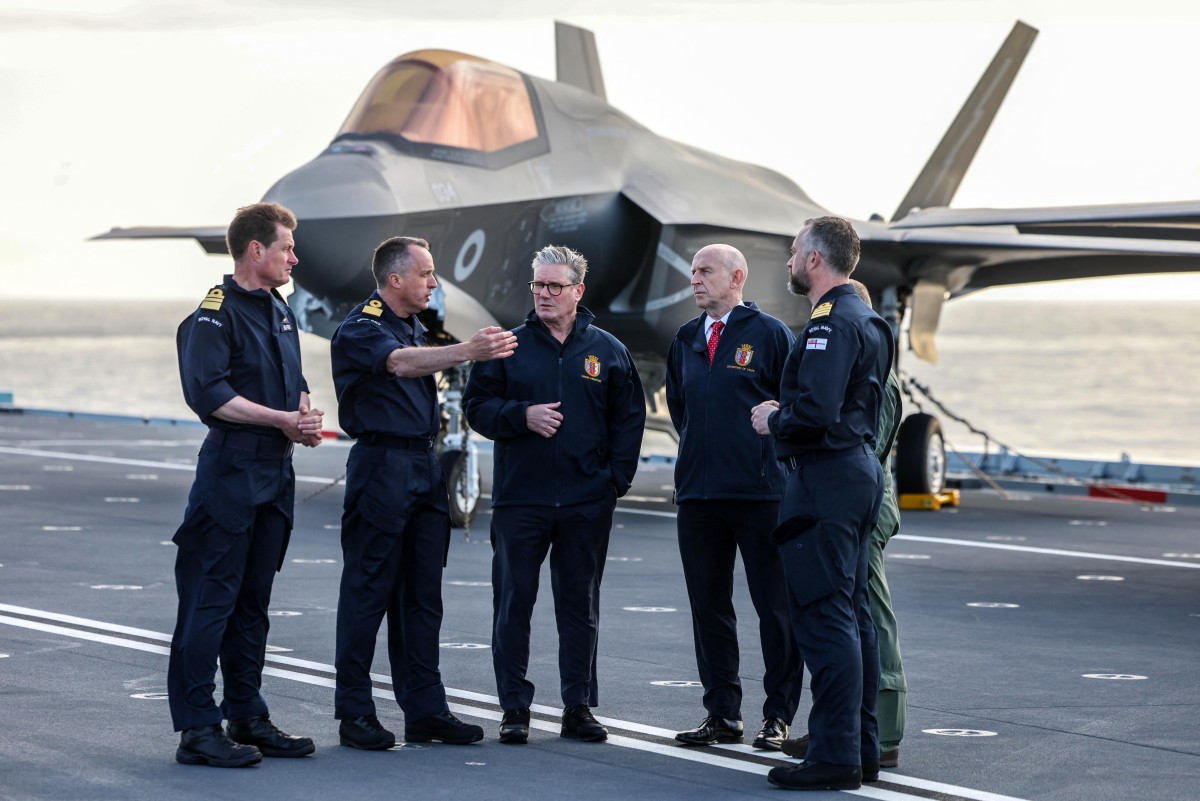
The report contended that the Royal Navy’s fifth-generation F-35s would offer a significant advantage in a deep-blue naval conflict against the land-based Chinese J-15s stationed aboard their carriers.
In retrospect, considering the HMS Prince of Wales’ horrible outing in the Indo-Pacific, these claims will appear boastful even to the British media.
Understandably, Chinese and Russian state-run media outlets seized the opportunity to cast a shadow over British naval power.
Russia’s Sputnik India account on X posted, “British F-35 makes emergency landing… Again. Just weeks after one F-35 was stranded in India, another was forced into an emergency landing at Japan’s Kagoshima Airport. Collecting emergency landings like souvenirs”.
🇮🇳🇬🇧 We were this close to calling the F-35 cultural heritage
The British F-35 jet fighter finally leaves Thiruvananthapuram Airport after 38 days.
Honestly, it would've looked great in an Indian museum. pic.twitter.com/GoDeSm34QL
— Sputnik India (@Sputnik_India) July 22, 2025
China’s state-run Global Times suggested that the malfunctions “underscored the F-35B’s overly complex systems and highly demanding maintainability,” something UK sailors “could be struggling to deal with in far seas deployments.”
The Global Times cited Chinese expert Wang Ya’nan, who remarked that the F-35B is the most technically complex variant of the F-35 family and poses “significant maintenance challenges,” especially during prolonged carrier operations far from home.
The HMS Prince of Wales, the paper reminded, has been plagued by “technical issues” despite aiming to demonstrate Britain’s fast-jet capability at sea.
However, despite these setbacks, the UK Royal Navy must hope that the F-35B fleet of the HMS Prince of Wales does not encounter any further technical glitches during its remaining deployment.
The UK CSG is formed around HMS Prince of Wales, the 65,000-ton Queen Elizabeth-class aircraft carrier – the largest surface vessel ever constructed in the UK.
She is supported by a Type 45 Destroyer, HMS Dauntless, a Type 23 Frigate, HMS Richmond, Royal Fleet Auxiliary Support Ships, and ships of allies and partners. The CSG operates F-35B Lightning aircraft, as well as Merlin and Wildcat helicopters, as standard.
- Sumit Ahlawat has over a decade of experience in news media. He has worked with Press Trust of India, Times Now, Zee News, Economic Times, and Microsoft News. He holds a Master’s Degree in International Media and Modern History from the University of Sheffield, UK.
- VIEWS PERSONAL OF THE AUTHOR.
- He can be reached at ahlawat.sumit85 (at) gmail.com

